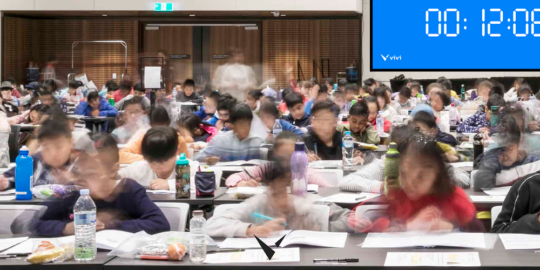
With schools across the world either closing or urging students to stay home due to COVID-19, learning remotely has been met with significant challenges.
Teachers are rapidly adjusting lessons and teaching styles to accommodate millions of students who learn at different speeds, are at varying levels of tech know-how and face a range of educational equity.
There is also the importance of wellbeing to consider and how remote learning may affect students.
So how can teachers adapt to the challenges of remote learning?
Don’t expect to cover everything you would in class
Decide on which lessons are the most important for students to learn and understand. It’s also important to recognize how unfamiliar this situation is for students. A New York Times article interviewed students about their thoughts and feelings regarding remote learning, with many describing ‘the challenges of distance learning, from struggling to understand assignments and getting easily distracted to not having reliable internet.’
Being realistic about what you’re able to cover, and what students will be able to learn is pivotal to getting the most out of remote learning. Understanding that a key component to learning is collaboration will help form the basis of a good remote lesson plan. To illustrate this point, the same New York Times article quotes one student as saying, “Peer-to-peer interaction is a really pivotal part of education at my school, and it feels like it falls so short in our distance learning.”
Use accessible and effective technology
There is no way around it; remote learning requires a tech element for it to work. Choosing the right solutions, however, can be a challenge given the ‘digital divide’ faced by millions of students globally.
A research paper, titled The Digital Divide and Education Equity, ‘says this “divide”—the gap between people who have sufficient knowledge of and access to technology and those who do not—can perpetuate and even worsen socioeconomic and other disparities for already underserved groups.’
Therefore, we’re developing a remote learning tool that students can access via their smartphone. No additional hardware or infrastructure is needed.
This tool will enable teachers to schedule lessons for students throughout the day. It addresses one of the biggest challenges with remote learning, with students receiving instructions from math, english, science, geography teachers, and so on, all at the same time.
Our solution presents students with structured and easy-to-follow lesson plans that are scheduled throughout the day.
Teachers will be able to monitor a student’s engagement with lesson content by accessing tracking metrics in our cloud-based admin platform; Vivi Central.
We’re also making the solution free for schools and students to use, globally.
Self care
Managing your personal health – both physical and mental – is obviously important but can seem more difficult during remote learning. You may feel overwhelmed with urgent work concerns, worried about your students or feel like you are under increased pressure.
However, it’s important teachers avoid becoming physically and mentally exhausted or overtired for the sake of themselves, and their students!
As highlighted by the World Health Organization (WHO), ‘health is not merely the absence of disease or illness but a state of complete physical, mental and social wellbeing’.
- Physical wellbeing – Getting adequate sleep and exercise are necessary for maintaining our health. It’s also a bonus that regular exercise helps us sleep better! Ensuring a healthy diet is adhered to is also essential for providing us with the energy needed during these testing times.
- Social wellbeing – Staying connected with friends and family is, of course, vital. With the current focus on video conferencing tools such as Zoom, Google Hangout, Skype and FaceTime, making use of these resources to stay connected allows us to see familiar faces, check-in on loved ones and also share our thoughts and feelings. Connecting with peers is also important, which is why we have set up the Education Exchange; a place for teachers to share ideas and discuss their experiences.
- Mental wellbeing – Be kind and forgiving to yourself. Erica Frydenberg, Ph.D., an Associate Professor of Psychology at Melbourne University, a world-leading psychologist in the field of coping says that promoting positive coping strategies leads to greater resilience. Make time for yourself to do the things you love that are calming and help you recharge.
Dr. Frydenberg suggests adults spend around 20 minutes per day reflecting on their own self-care and use a version of the below ‘checklist’ to breakdown their activities.
Student wellbeing checks
Understanding how children are responding to remote learning is critical in shaping how teachers approach lessons moving forward. In response, we have recently developed a remote student feedback tool that can help schools better understand how students are coping during these most unusual circumstances.
All responses are confidential, and the data is collected and presented in easy-to-understand ways that can help e-learning coordinators gain valuable insights into students’ wellbeing.
 Consider parents’ struggles, too
Consider parents’ struggles, too
An article in The Age newspaper says, ‘overwhelmed parents began calling Victorian school principals after only one day of home schooling to beg that their children be allowed to return to regular classes.’
Many parents are not familiar with modern learning structures and struggle with students’ questions about their lessons. And then there are parents for whom English is not their first language. An article on abc.net.au points out that some migrant parents may struggle to make sense of the remote learning curriculum.



